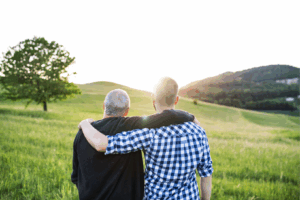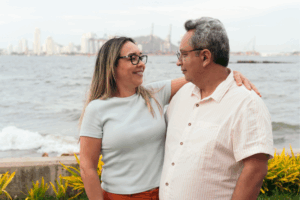The legend of Prometheus is — as most ancient legends are — somewhat confusing. We all know the basic story, that Prometheus stole fire from the gods and was punished for doing so, but one little detail that’s often forgotten is why he stole the fire: he did so to give it to mankind. As a god, Prometheus had given undue knowledge and power to mortals, and for that, he was chained to a mountain to be tormented for eternity.
It’s not really surprising that one of mankind’s oldest stories warns of the danger of humans taking on godly powers, and it’s a story that gains relevance with new scientific discoveries every day. In particular, as technology in healthcare becomes more and more sophisticated, physician-assisted death is increasingly at the forefront of health policy discussion in states and countries around the world, and no place seems to be seeing more activity than California.
Physician-assisted death (PAD) is an issue that entangles religious belief, personal morality, science, and legislation. It’s one of the more confusing issues of our day, and one that has come into the limelight recently as California passed a PAD law, The End Of Life Option Act, by Governor Jerry Brown, which will go into effect on June 9th. For people in the Bay Area who have older loved ones diagnosed with a terminal illness, understanding the law — and preparing yourself in the event of a discussion — is the best way to approach the subject with the care, understanding, and love it requires.
What California’s Physician-Assisted Death Laws Mean in Practice
This law is significant for the US because California is by far the largest state where physician-assisted death will be legal (other states with PAD laws include Oregon, Washington, Vermont, and New Mexico). Because of that, people will be closely monitoring how the law performs as it moves from theory to practice. Despite some exceptions, there are very strict guidelines that every relative of an older adult who’s beginning to think about preparing for their death should know.
According to the California Legislative Information database, a person of the following characteristics can elect physician-assisted death:
- Must be at least 18 years of age.
- Must have California residence.
- Must have been diagnosed with a terminal disease that can reasonably be expected to result in death in less than six months, by two separate California doctors (an attending physician and a consulting physician).
- Must have the capacity to make medical decisions. The request for the life-ending drugs cannot be made by an agent with power of attorney, an advanced healthcare directive, an executor, or anyone else.
- Must make two separate verbal requests for the aid-in-dying drugs at least 15 days apart, as well as a written one that is signed, dated, and has two adult witnesses. (The state request form is titled “Request for an Aid-in-Dying Drug to End My Life in a Humane and Dignified Manner.”)
- Must, after the prescription is filled, fill out a” Final Attestation for an Aid-in-Dying Drug to End My Life in a Humane and Dignified Manner” within 48 hours.
This drug is taken at the time and place of the patient’s choosing, but the law states that physicians are required to ask the person take them in a home, as opposed to on a street or in a public place like Golden Gate Park. Physicians are also supposed to recommend that patients have someone with them when they administer the drug. Obviously, neither of these are binding upon the patient.
So we see that the law as it’s written is strictly regulated and only applies to people who have already been diagnosed with an end date who are expecting a rapid decline in their quality of life. What does that mean if that’s someone you love?
Talking to an Older Loved One about PAD
The decision to take one’s life is a harrowing one, and should obviously never be entered into lightly. That’s why the law is so strictly written. For people who are thinking about ending their lives, but do not fall under the rubric of the End of Life Option Act, we urge you to call The Friendship Line: 415-752-3778 locally, 800-971-0016 nationally. This resource offers professional training and compassion for older people who simply need someone to talk to about thoughts and fears. Suicide rates among the elderly are an epidemic, which is one of the reasons that the Center for Elderly Suicide Prevention was formed. If you or a loved one have thoughts of suicide, please get in touch.
But PAD is different from suicide, at least legally, since it assumes a nearing death. Indeed, the law says that while it’s up in the air what the final cause of death will be called legally, PAD “shall not constitute suicide.” And it shouldn’t be considered an “alternative” to traditional suicide, really, as studies in US states where it’s legal show it has no meaningful impact on suicide rates. It’s a different thing altogether. It means that when facing the end of life, the older adult will have to make a decision of what’s important to them and how they wish to approach the final days.
There’s no “right” way to have this conversation. No matter what, there will always be anxiety about the end of life. For some people, choosing the time and place of their death can be a great comfort, especially if they are faced with a diagnosis of suffering and decline, where the only certainty is hardship. For some people, though, that’s okay. They either don’t want to give up hope, or simply don’t want to go before the end. And ultimately, there is no right or wrong decision. You just have to know the facts and be open to a conversation.
For the loved one, this means listening, but also letting your opinion be known. It’s ultimately their choice and their life, but everyone’s life impacts the ones around them. In the Netherlands, where euthanasia (which is slightly different, but still involves a choice) has been legal for decades, a study was done about rates of bereavement and traumatic grief. People whose loved ones had terminal cancer and chose euthanasia experienced less painful grieving periods compared to those who died a more natural death. It was found that “bereaved family and friends of cancer patients who died by euthanasia had less traumatic grief symptoms, less current feeling of grief; and less post-traumatic stress reactions than the family and friends of patients who died of natural causes. These differences were independent of other risk factors.”
Of course, every case was different. The authors of the study made it clear that their work was value-neutral, calling only for an open discussion. And that’s what we all ask for. We all want the ability to understand options in a changing moral and medical climate. Your older loved one should be able to make a choice assessing what’s best for them and for the people they care about. For some, that might be physician-assisted death. Many others will choose to go on. Having a space to talk, understand, and grieve is what will make the weightiest decision of a lifetime feel like a less-heavy chain.
At the Institute on Aging, we understand the challenges that come with making decisions at the end of life. Our trained staff helps aging adults and their loved ones understand the hardships and the joy that come with aging. Connect with us today to learn more about our comprehensive programs.







